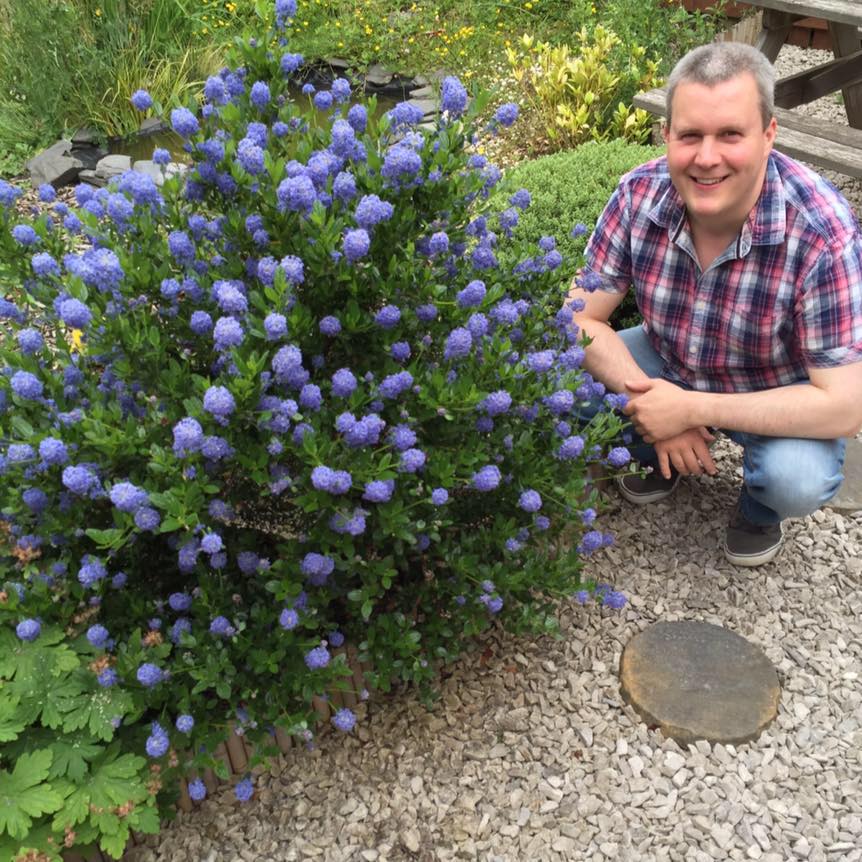
“I move out next week”
Those words were music to my ears when I recently had a catch up with my advocacy partner.
My name is Phil and I have been a Citizen Advocate with the Dunfermline Advocacy Charity since early 2012. My advocacy partner has been resident at Lynebank Hospital in Dunfermline for 17 years. To have finally reached the point where he is moving to a flat of his own prompts all sorts of feelings and emotions for both him and I. Nerves, fear, excitement, anxiety, apprehension to name a few. So how did we get to this point? And what was my involvement as a Citizen Advocate?
I first made contact with Dunfermline Advocacy over three years ago to find out more about becoming a volunteer. I wasn’t new to voluntary work having previously done some volunteering with Samaritans and Victim Support Scotland, however I had the desire to do a role that was face to face, where you can really get to know a person and support them one to one. I had researched the work of DA and knew they helped to create long term partnerships between local citizens and vulnerable people for support, understanding and friendship. It sounded exactly the sort of thing I was looking to do. I was quickly invited in to the DA office for a cuppa and a chat with Barbara one of the Development Workers there. She took the time to get to know me over the course of a few meetings (coffee and biscuits provided!) This helped her to think about possible “matches” of people who were seeking an advocate and who shared similar interests. I attended the Preparation Training which was excellent in covering important issues like communication, the role of an advocate, data protection and confidentiality. It was not long after this that she suggested arranging an initial introduction to my advocacy partner.
Barbara had provided me with some background information about him and also his living arrangements, being a secure unit at the hospital. The first few meetings, with Barbara present, went very well. We got to know each other, played some board games and even had a go on the Nintendo Wii. It also allowed him to share with me details of his main passion of Lifeboats. He loves to go to Lifeboat Stations and their Gala Days whenever the opportunity arises. We were then left to it. Barbara was on hand if we needed her and I would continue to have regular catch ups with her to see how things were going, but for all intents and purposes the advocacy partnership was now left to me and him to establish.
Building rapport and trust with my partner was my immediate priority. As his advocate I am an independent unpaid person in his life, he can confide in me and raise concerns with me directly for me to voice on his behalf if he feels uncomfortable or unable to do so. He would have regular CPA (Care Programme Approach) meetings and MHT (Mental Health Tribunal) meetings. Both of these exist to ensure he has input over his care and treatment and is an opportunity for all stakeholders involved in his care to get together to see how he is doing. As his advocate I have the right to be present too, if he wishes me to be there.
It was at a MHT in mid 2012 that my partner was advised he was fit for discharge to community living. This was fantastic news. What we weren’t to know then was that it would be some three years until he was actually discharged. The reason it took so long? Mainly it came down to finance, identifying a provider of the support he will need in the community, securing funding for his ongoing care package and partly finding a suitable property that satisfied his desire to be close to a lifeboat station, or at least to be able to see the sea from his property.
Throughout those three years I was keeping track of progress, attending CPA’s and MHT’s with him and chasing relevant parties for updates (Solicitors, Mental Health Officers, Social Work and hospital staff) My priority was to help him navigate the complex structure of professionals involved and to ensure he understood what progress was being made. I was also able to encourage him to stay positive despite the prolonged discharge process and offer emotional support and the opportunity to chat things over when he was feeling down about it. Meanwhile life had to continue so my partner and I focussed on small and achievable goals, things we could do at our get togethers that would provide a change of scenery for him even if only for an hour or so. He would regularly attend the Aspergers Club in Dunfermline, and on a few occasions I was able to attend the club with him to share a game of pool, table tennis or connect four. We also attended the Dunfermline Advocacy Christmas parties and eventually had permission granted by the hospital to spend time in the hospital canteen together. I had to follow a strict protocol regarding escorting him to the canteen and then back to the ward.
The support I have received personally from the staff within the organisation has been fantastic. They are always on hand for advice and guidance. Recently Ewan took over being my Development Worker and we meet up at regular intervals to review the partnership.
Over these three years my partner has demonstrated an immense amount of patience and determination whilst waiting to move out of hospital but finally it has happened. I have an enormous sense of satisfaction in having played a part in helping to steer him towards this new chapter of his life and it makes being a Citizen Advocate so worthwhile. A real example of “friendship changing lives”
